Secteur du Retail e-commerce
La dernière décennie a connu une croissance rapide des pure players de l’e-commerce, en particulier dans le secteur non-alimentaire, aux structures de coûts en rupture par rapport à celles des distributeurs traditionnels. La pression sur les marges s’est accrue pour diverses raisons : perte de trafic et/ou de chiffre d’affaires, marges réduites sur les ventes e-commerce et croissance différentielle entre le chiffre d’affaires et les coûts.
Dans le même temps, les consommateurs sont toujours plus informés et versatiles et mettent les distributeurs traditionnels sous forte pression pour transformer en profondeur leurs business model sous peine de disparition. Pour se démarquer, les entreprises du secteur doivent adapter leur stratégie opérationnelle en profondeur.
Les défis auxquels le secteur du Retail et du e-commerce est confronté
Pour pérenniser leur activité, les distributeurs doivent :
- Offrir une expérience client et un assortiment différenciants
- Optimiser radicalement leurs coûts end-to-end pour compenser les pertes de marges et financer les investissements nécessaires
- Garantir l’excellence opérationnelle au service d’une expérience client optimale
Pour répondre aux attentes nouvelles des consommateurs et à la pression de la concurrence, le digital est incontournable. Il permet de transformer l’expérience client, de développer la connaissance client et de faire évoluer la Supply Chain, les prévisions de ventes, la gestion des prix, les promotions et les opérations en magasin.
Ce que nous pouvons faire pour vous aider à relever les défis liés au secteur du Retail et du e-commerce
Nous travaillons avec 10 des 25 plus grands distributeurs en Europe et quelques-uns des principaux distributeurs aux États-Unis, à toutes les étapes de la chaîne de valeur.
Nous aidons nos clients à définir leur stratégie dans le domaine des opérations end-to-end et à mettre à œuvre la transformation.
Réinvention du modèle retail
- Stratégie omnicanale
- Rôle des magasins et stratégie de mise à profit des assets
- Gestion de l’innovation (choix technologique, partenariat etc.)
- Advanced data management (gestion des données avancées, exploitation de l’ensemble des données disponibles etc.)
Transformation digitale
- IA (expérience client, customer intelligence et gestion de l’offre, prévision des ventes, gestion des prix, promotion et opérations magasins)
- Digital in store
- RPA (Robotic Process Innovation)
Opérations en magasin
- Stratégie de service
- Productivité/lean point de vente
- Planification des ressources
- Optimisation des process back-office magasins
Achats, sourcing
- Stratégie achats
- Organisation et pilotage de la performance achat
- Optimisation et organisation des bureaux de sourcing
- Performance de la négociation fournisseurs
- Collaboration avec les fournisseurs
Supply chain
- Stratégie supply chain
- Organisation et pilotage de la supply chain
- Optimisation des approvisionnements
- Pilotage de la performance de la négociation avec les fournisseurs
- Collaboration avec les fournisseurs
Logistique
- Politique de service magasin/web
- Optimisation end-to-end
- Schémas directeurs logistiques
- Organisation et pilotage de la logistique magasin/web
- Plan de performance logistique
- Mécanisation/automatisation
- Optimisation du transport
Back office
- Optimisation des fonctions back office
- Shared services et externalisation
- Optimisation/automatisation des processus support
- Pilotage du service et de la performance
Transformation et conduite du changement
- Plan de transformation
- Mobilisation des acteurs
- Accompagnement de la transformation des métiers et des organisations
Notre démarche
Notre cabinet de conseil en stratégie des opérations associe expertise technique, expérience opérationnelle et connaissance métier pour accompagner ses clients à résoudre les problèmes spécifiques au secteur du Retail et du e-commerce afin d’obtenir des résultats durables. Notre démarche garantit l’adhésion à tous les niveaux de l’entreprise pour nos clients ainsi qu’un résultat pérenne. Nous avons accompagné un large éventail de clients dans le secteur du Retail et du e-commerce tels que Amazon, Williams-Sonoma, Target, JB Hi-Fi, IKEA, Intermarche, Carter’s, Carrefour, Waitrose et Reliance Retail. Cliquez ici pour en savoir plus.





